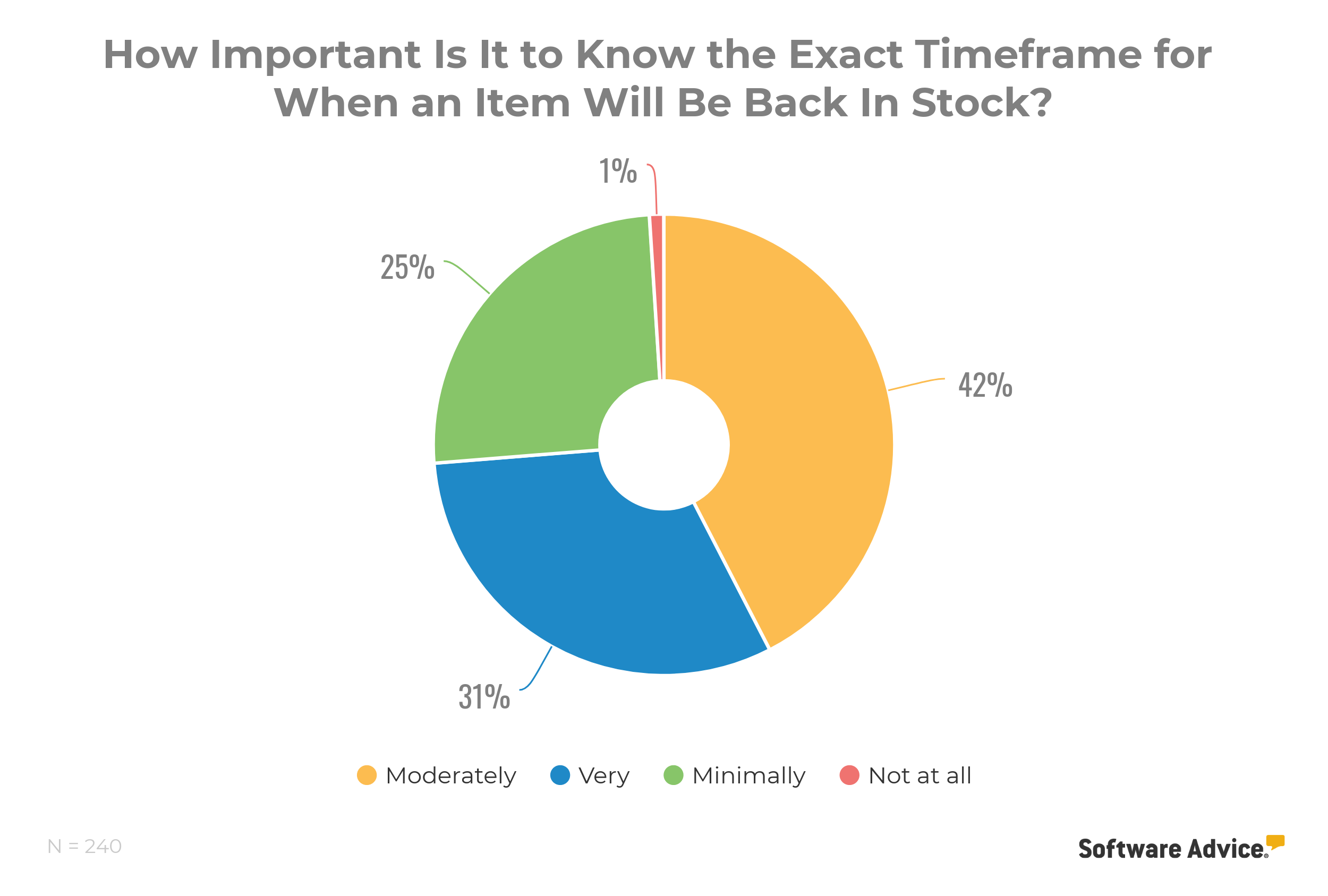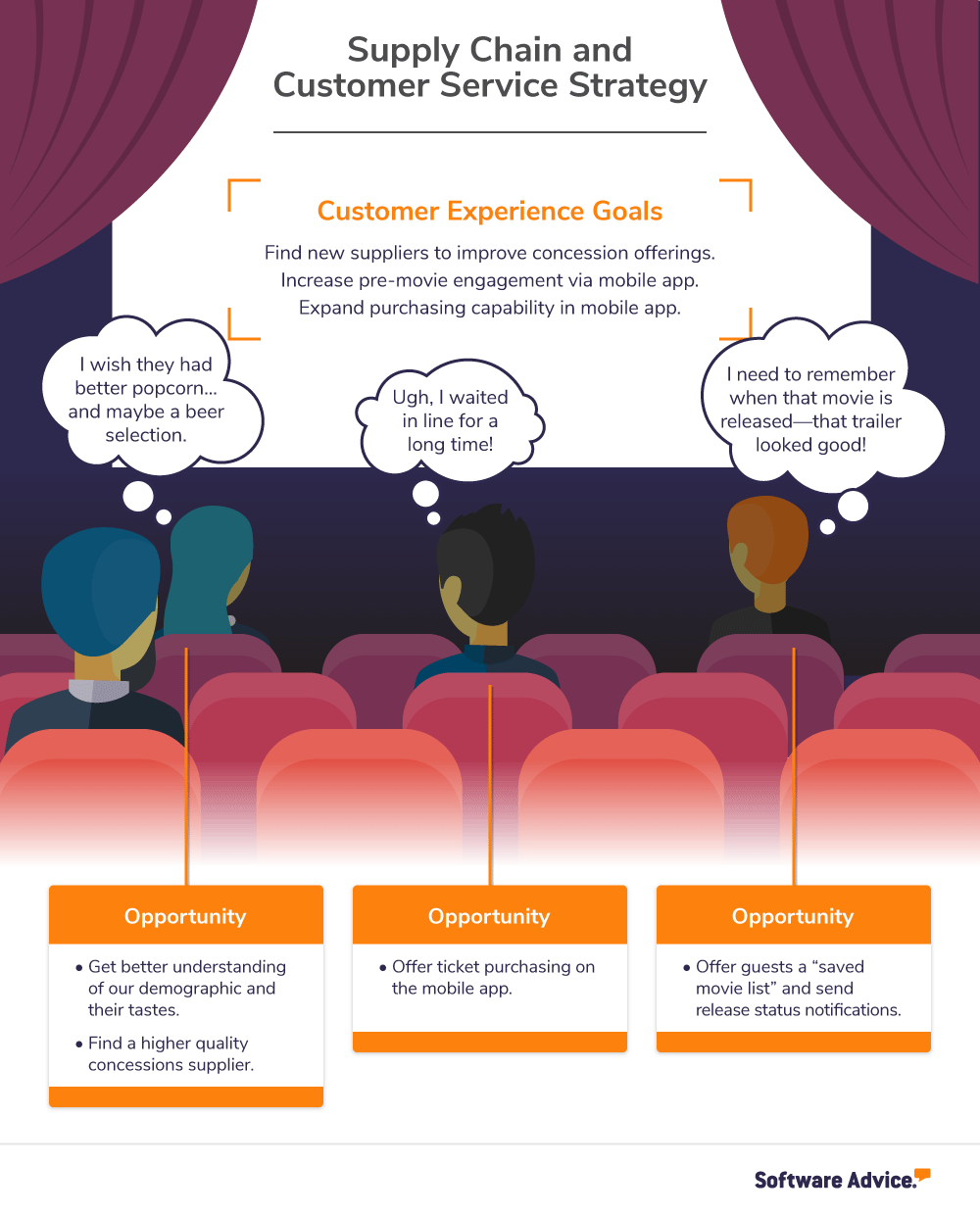Your Entire Supply Chain Strategy Explained On Just One Page
Gone are the days of 30-page business propositions with each department submitting an independent plan, creating a silo’d and therefore less effective process.
Don’t believe me? Check out the business plan created by the founders of Southwest airlines. They famously wrote their first business strategy on a napkin.

What the first Southwest business strategy looked like (Source)
While this is an extreme example, it still shows how effective a simple and clear strategy can be.
In this article, we’ll introduce the concept of a one-page business strategy. This is based on the research of Gartner VP Analyst, Heather Colella, but this version has been tailored for supply chain leaders and the needs of small to midsize businesses. (Full access to Heather’s work is available to Gartner clients only, but here’s an overview for you.)
Why the supply chain needs to be in the business strategy
Consumer expectations are shifting, as many consumers demand decreased shipping costs and increased shipping speed. This is exciting news for supply chain leaders: the only way to stay competitive is to deliver on these expectations, which means the management of your supply chain plays a critical role in your business strategy.
Check out what industry expert, Tom Brouillette, has to say about supply chain disruptions and how to thrive in it.
Just one way in which the supply chain directly drives sales is the ability to tell the customer when a product will come back in stock. In a recent survey we ran, 73% of online shoppers value knowing the exact timeframe for an item to be restocked. Only the supply chain department can provide this info.

Highlighting wins such as this will increase the visibility of the supply chain as a core feature in business success.
How to get started creating the business strategy plan
The end goal is to create a one-page illustration or write up that shows the business’s purpose, vision, and short- and long-term business strategy. But while you’re the driver of this initiative, you can’t do it alone. So before you start writing anything, take the time to listen to the leaders in your company.
Step 1: Be sure you know the current business narrative used by the CEO, CFO, and COO
If this message isn’t shared often, check out the employee handbook or new employee onboarding material as oftentimes the CEP will have a letter about the history, vision, and goals there. If no luck there, you’ll likely hear common phrases used when doing the step below.
Step 2: Talk to key stakeholders and listen to the stories they tell
Create a library of “stories” about how the supply chain is impacting the business strategy. Ask them to describe the strategy from various perspectives — customers, employees, business executives — and project what they would say.
Step 3: Pick one business driver to focus on
It’s unrealistic to perfect your operations, customer service culture, and make an industry-leading product all at the same time. Even huge corporations don’t do this. Below we’ll give a brief overview of the three core business focuses and give examples of corporations excelling in each.
Strive for operational excellence: This means your front office, logistics, warehouse, and other areas of operations are all driving for efficiency and cost-cutting. Amazon’s marketplace is a gold standard in operational excellence as their key focus. Everyone knows their customer service can be lacking and they only just begun making their own products. So they nailed down operations first and foremost.
Be customer centric: With this focus, your customers know they can call, email, or chat with a well-informed and empowered customer service agent at any time of the day. Zappos gets the award for being customer-centric. They famously are “powered by service,” offering quick exchanges and even fashion advice, all to build a loyal customer base.
Make a truly excellent product: When the product you’re providing is truly exceptional, your brand can thrive even if customer service or operational excellence takes a backseat. Apple is so successful because of their focus on making excellent products. Fans are loyal to the brand for the products, not so much the customer service or how quickly they deliver their products.
Trying to make all three a priority is just too overwhelming for even the best of businesses. For more info on this approach, check out The Discipline of Market Leaders by Michael Treacy & Fred Wiersema.
Step 4: Now start mocking up the one-pager
Start with old school with paper and pencil or use a program like MS Word to begin the draft. Try to use images wherever possible. Here’s an example for a movie theatre looking to improve their customer-centric business strategy:

On your one-page business strategy doc, answer these three questions:
What do we need to do to “win” in the marketplace?
What new business capabilities are required to achieve success?
How will the supply chain contribute to that success?
In the movie theatre example, the first question is represented by the thoughts and opportunities shared by the customers. The second and third questions are addressed on the movie screen, stating the next steps in order to “win” in the marketplace.
 Pro tip: Keep it simple. This will only be a draft, a spark for the conversation. It needs to be engaging and compelling. If it’s complex or detailed, your peers and executives could feel attacked, overwhelmed, or uninterested.
Pro tip: Keep it simple. This will only be a draft, a spark for the conversation. It needs to be engaging and compelling. If it’s complex or detailed, your peers and executives could feel attacked, overwhelmed, or uninterested.
More tips and tricks for establishing your strategy
The concept of boiling down your business strategy to a one-page narrative can still seem overwhelming. We gathered a few extra tips to help set you up for success.
Engage with your peers across the business, from marketing, to operations, to HR, to finance, to IT. Each aspect of the business needs to agree and buy into the strategy developed.
Tell the business story and talk about business success 100% of the time. Don’t be afraid to weave the supply chain with other areas of the business as long as both areas are driving the same business goals.
“Good enough” is good enough, and is actually the right starting point. If you make the one-pager perfect, you risk your peers not feeling the need to contribute—but their feedback and engagement is exactly what you need.
Don’t laminate it. Lamination implies something is done and static. This strategy needs to be an ongoing conversation and updated regularly. The marketplace, regulations, and consumer tastes are all going to change, so you need your strategy to change accordingly.
Have you created a one-page supply chain strategy and have some tips to share? Tweet me at  @AnalystOlivia!
@AnalystOlivia!